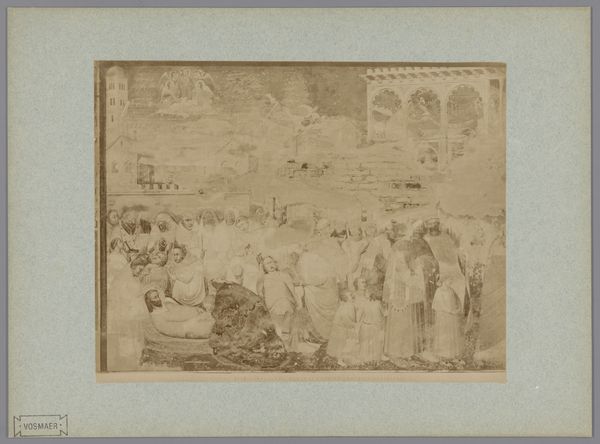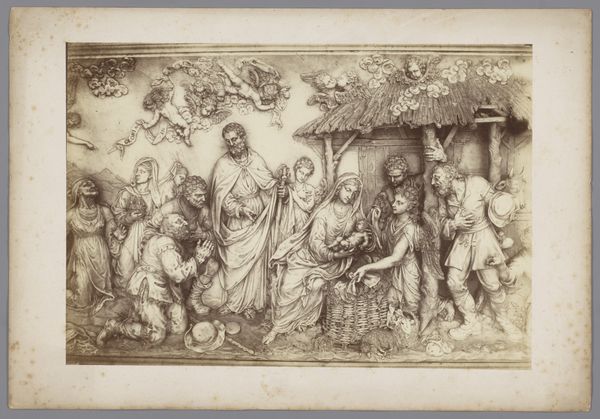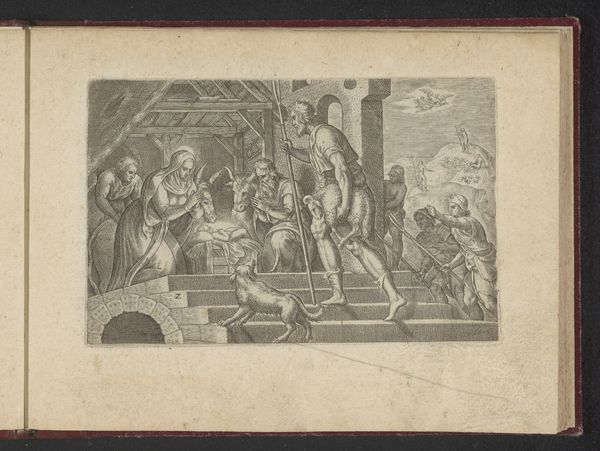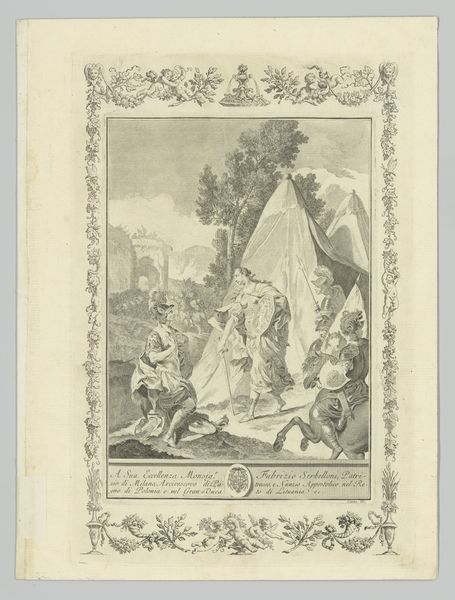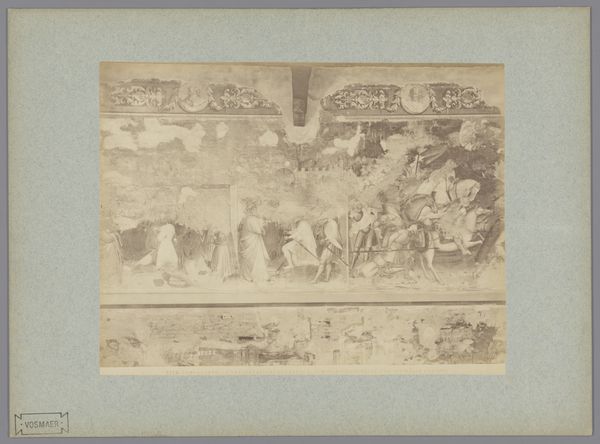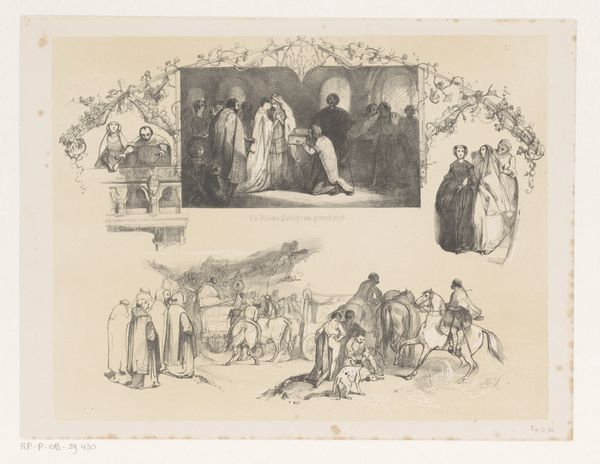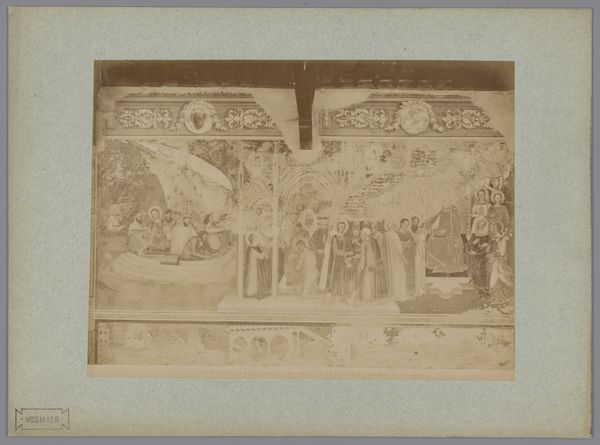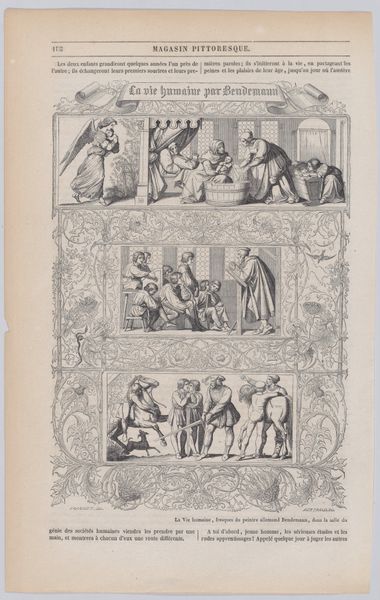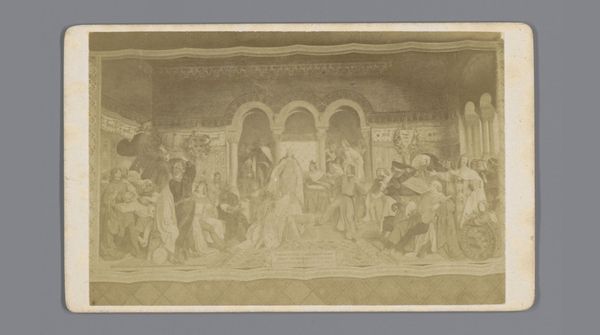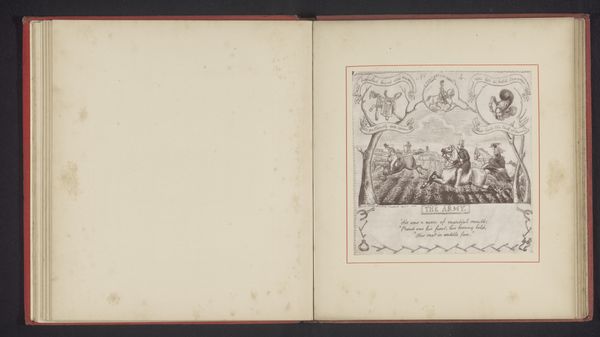
Fotoreproductie van tapijt Christus overhandigt Petrus de sleutels, Galleria degli Arezzi, Vaticaan c. 1860 - 1900
0:00
0:00
fratellialinari
Rijksmuseum
print, photography, gelatin-silver-print
# print
#
photography
#
gelatin-silver-print
#
history-painting
#
academic-art
#
italian-renaissance
Dimensions: height 324 mm, width 435 mm
Copyright: Rijks Museum: Open Domain
Curator: This gelatin-silver print captures a reproduction of a tapestry: Christus overhandigt Petrus de sleutels, located in the Galleria degli Arezzi, Vatican, dating from around 1860 to 1900 and credited to Fratelli Alinari. The work resides here at the Rijksmuseum. Editor: The sepia tones and the sheer detail – it's like looking at a memory trying to surface. The textures, even in a photographic print, feel quite rich, almost velvety, especially within the draped clothing. Curator: Indeed, this work encapsulates the appropriation of Italian Renaissance style during that period. Note the central positioning of Christ bestowing the keys upon Peter, a compositional tool for theological emphasis. And that ornate border—clearly drawing on classical motifs. Editor: Absolutely, this choice broadcasts artistic heritage but also echoes the socio-political power of religious imagery in nineteenth-century Europe. Consider the original function—a tapestry, destined for a gallery in the Vatican, later documented as a photograph—a statement of institutional influence across varied media. Curator: It strikes me how this piece embodies a sort of pastiche, or almost hyper-real effect; it employs stylistic vocabularies without necessarily being of them. It shows Academic art movements of the 19th-century revisiting established themes and aesthetics. Editor: Certainly, and think about its potential distribution! A photographic print could disseminate the image far wider than the original tapestry ever could. Who was its audience then, and what did it represent? I wonder, was it conceived merely as art documentation or something greater—visual propaganda? Curator: A potent question. This image serves not merely as art; it documents power dynamics within art, religion and state. It truly presents a discourse on cultural and historical impact. Editor: Indeed, quite fascinating how its interwoven structure embodies the complex layering of artistic vision, medium, and context.
Comments
No comments
Be the first to comment and join the conversation on the ultimate creative platform.
